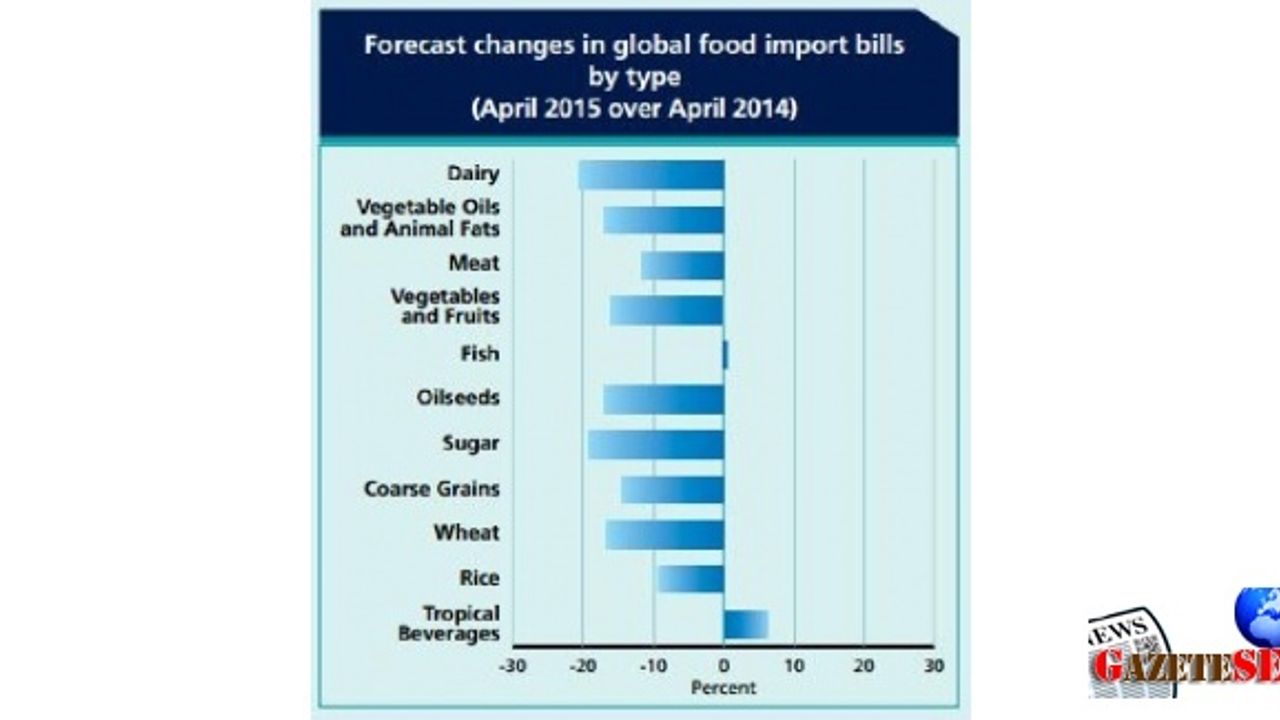Istanbul, May 7 () - Global food import bills set to fall sharply in 2015 but currency movements curb benefits, according to a biannual report by UN Food And Agricultural Organisation (FAO) released on Thursday.
The value of global foodstuff imports in 2015 was tentatively forecast to drop to a 5-year low of 1.13 trillion dollars, 12 percent or 153 billion dollars, less than the revised 2014 estimate and 14 percent below the record high in 2013, the report said.
"The expected fall comes at a time of very low international prices compared to previous years and a sizeable decline in freight costs" Adam Prakash said, Economist at FAO. "Of the commodity import bills foreseen to undergo the largest absolute declines are cereal-based foodstuffs,as well as vegetables and fruits, which could fall by a combined USD 59 billion, or 14 percent and 16 percent, respectively."
The decline in these bills was a reflection of weakened demand and ample supplies in major import destinations, especially in the case of cereals, he added.
Products in the livestock category, including meat and dairy, could decline together by as much as USD 37 billion, despite a slight increase in imported volumes according to Parakash. "Similarly, world import bills of commodities within the oilseed complex – vegetable oils and oilseeds – are forecast down by USD 31 billion from 2014, in spite of rising import volumes, as international vegetable oil quotations have never been so low since 2005."
Sugar too would register a drop in bills, which were anticipated to decrease by 10 billion dollars from the previous year as a result of considerably lower quotations and smaller volumes. "The only import bill that looks set to significantly increase in 2015 is that of the tropical beverage group, especially coffee and cocoa" he added.
Exporters of these US dollar-denominated commodities had keenly met soaring demand, facilitated by the weakness of their own currencies vis-a-vis the dollar, while the global value of imported fish was likely to be similar to 2014 levels, given sustained international demand.
(GRAPH)




















